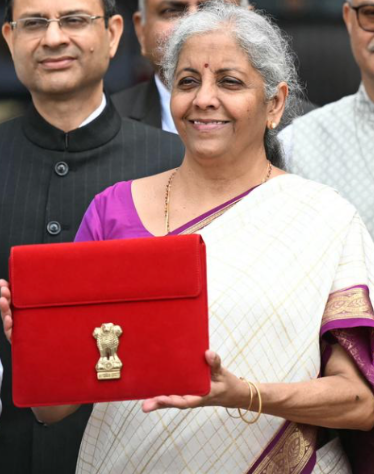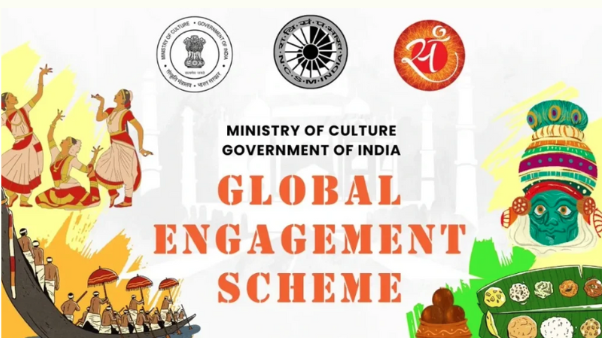Daily Current Affairs | March 11 2025 |
Important Topics from Current Affairs : 1) Flexible FRBM Targets 2) Global Engagement Scheme 3) Arms Imports : SIPRI Report 4) Bills of Lading Bill, 2025 5) Gene Edited Bananas
Jumbo IAS
3/11/20255 min read
1) Flexible FRBM Targets
The Fiscal Responsibility and Budget Management Act mandates that India’s fiscal deficit be limited to 3% of GDP.
While the rule was introduced to maintain financial stability, the rigidity of this target has unintentionally restricted growth-oriented spending.


Problem with Rigidity
Prioritise Revenue over Capital Expenditure - The 3% limit leads to ignorance of growth boosting capital expenditure.
State Specific Priorities Ignored - Indian states manage 60% of public expenditure, yet the uniform deficit cap ignores region-specific needs, limiting their development potential.
Less Room for Counter-Cyclical Policy - This policy is required during downturns.
Expensive Market Borrowings - Limited fiscal space forces states to borrow from market increasing their debt burden.
Way Forward
Flexible Fiscal Targets - Adopting a 3.5% to 4.5% range allows deficit adjustments based on economic conditions.
Increase CAPEX - Allocate more funds towards infrastructure, education, health etc., boosts growth and sustainability.
Generate More Funds for CAPEX - India can make a Sovereign Wealth Fund using its FOREX or raise money through infrastructure asset monetisation (NMP), to finance its CAPEX.
Improve Tax to GDP Ratio - Various GST and Direct reforms would increase tax compliance and tax base.
Transparency - Introducing third-party audits and public reporting can ensure fiscal accountability and curb fund mismanagement.
2) Global Engagement Scheme
The Global Engagement Scheme of the Ministry of Culture aims to promote India's rich cultural heritage, internationally and enhance India's global image.
The key Scheme objectives include strengthening cultural ties with foreign nations, promoting bilateral cultural contacts, projecting India's cultural identity on the world stage.
This Scheme is administered through Indian Missions Abroad.


Components
Festival of India : The artists, practicing Indian art forms, are given opportunity to perform abroad under the banner of ‘Festival of India’.
Grant in aid to Indo Foreign Friendship Cultural Societies : Released to these societies actively functioning in foreign countries by Indian Missions.
Contribution Grant to International Organisations : Funds are released to International Organisations of which India is a member.
India’s Membership to International Cultural Organisations
India is member state of United Nations Educational, Scientific and Cultural Organisation (UNESCO) and is a part of several important cultural conventions of UNESCO such as 1972 Convention on World Heritage, 2003 Convention for Safeguarding of Intangible Cultural Heritage, 2005 Convention on the Protection and Promotion of the Diversity of Cultural Expressions, UNESCO Creative Cities Network (UCCN), Memory of the World (MOW) Programme.
India is also a member of Inter-Governmental Organisations like International Centre for the Study of the Preservation and Restoration of Cultural Property (ICCROM), World Intellectual Property Organisation (WIPO) among others.
3) Arms Imports : SIPRI Report
India is the 2nd largest arms importer after Ukraine, though the trade figures decreased by 9.3% between 2015-19 and 2020-24.
This is as per data from Stockholm International Peace Research Institute (SIPRI).
SIPRI - An independent international institute focused on research in conflict, armaments, arms control, and disarmament. It was formed in 1966 in Stockholm, Sweden.


Defence Imports (India)
Russia remained the top supplier but its share dropped to 36% (from 55% in 2015-19 & 72% in 2010-14).
France emerged as a major supplier, with 28% of its total arms exports going to India.
India has contracted major military deals with France, including 36 Rafale jets & six Scorpene-class submarines.
Other Highlights of the Report
China exited the top 10 arms importers list for the first time since 1990-94, reflecting its growing domestic defense industry.
Pakistan’s arms imports surged by 61%, with China supplying 81% of its total imports.
European arms imports increased by 155% due to geopolitical tensions and military rearmament.
USA expanded its global arms market share to 43%, reinforcing its dominance.
Russia’s arms exports fell by 64%, now comprising only 7.8% of global exports, behind France (9.6%).
Italy climbed to 6th place in arms exports, with a 4.8% share in global arms trade.
4) Bills of Lading Bill, 2025
Lok Sabha passed the Bills of Lading Bill, 2024, which aims to update and simplify the legal framework for shipping documents replacing the colonial era Act of 1856.
Objective - Simplify legal processes, improve shipping efficiency and align India’s shipping sector with global best practices.


About the Bill
It is a legal document used in international shipping, acting as proof that goods have been loaded onto a vessel and specifying the terms of transport.
It replaces the Indian Bills of Lading Act, 1856.
The 2025 bill, is a brief three-Section Act, primarily governs the transfer of rights and confirmation that goods were loaded onto a vessel.
Implementing Authority - Ministry of Ports, Shipping & Waterways.
Benefits
Modernisation - It replaces colonial-era provisions with a more structured and simplified framework.
Ease of Doing Business - It streamlines shipping documentation, reducing litigation risks and legal disputes.
More Role for Central Government - Empowers the central government to issue directions to facilitate the law’s implementation.
In-Synch with Global Best Practices - Adapts international best practices to boost India’s role in global maritime trade.
5) Gene Edited Bananas
Tropic, the UK-based biotech company which has developed gene edited bananas, claims that their fruit remains fresh and yellow for 12 hours after being peeled.
Brown, over-ripe bananas often end up in dustbins, even when they are perfectly edible. Thus, this discovery would reduce food wastage and post-harvest losses.


Browning of Bananas
This aesthetically unattractive browning of Bananas is a product of their ripening process, which is caused by a hormone called ethylene.
Contact with ethylene triggers the activity of a number of genes, including one which linked to the production of the enzyme polyphenol oxidase (PPO).
PPO coming in contact with oxygen breaks down the yellow pigment in bananas to a brown hue.
How Non-Browning Bananas were Produced ?
The company made precise changes to existing banana genes such that the production of PPO is disabled. This does not stop a banana from ripening, but helps keep up appearances.
These became the first genetically engineered fruits to be approved for commercial sale in the US since 2017.
Blocking the production of polyphenol oxidase has also been shown to work in tomatoes, melon, kiwifruits and mushrooms.
Benefits :
Reduces Wastage - Bananas are extremely perishable, with some estimates saying that as much as 50% of the crop goes to waste each year.
Reduces Green House Gas Emissions - Food waste is a major contributor of GHG emissions, causing global warming.


